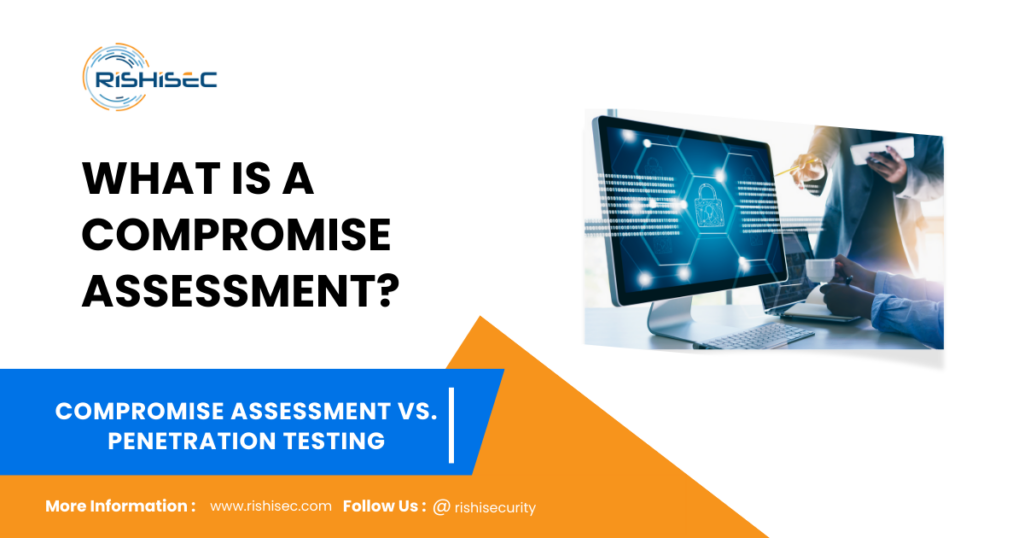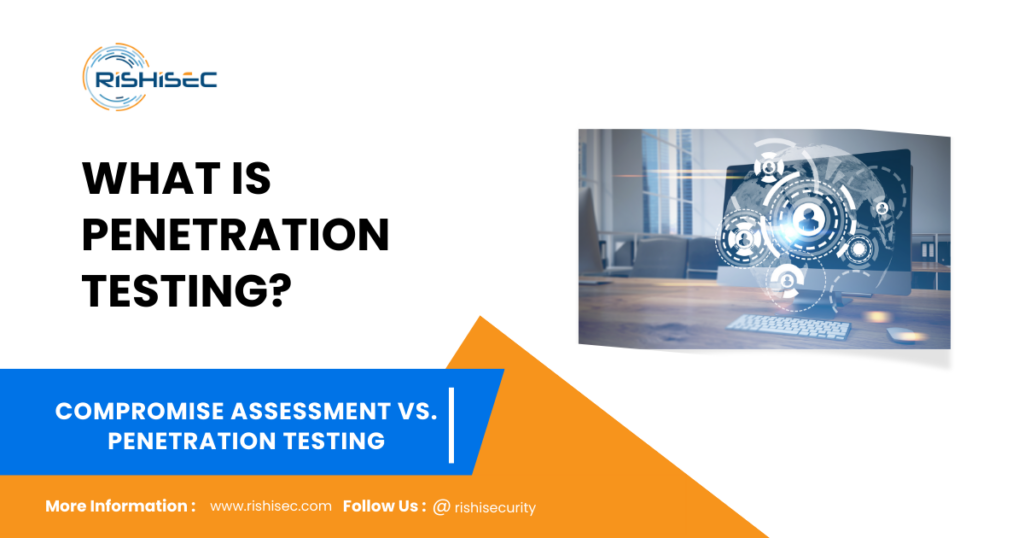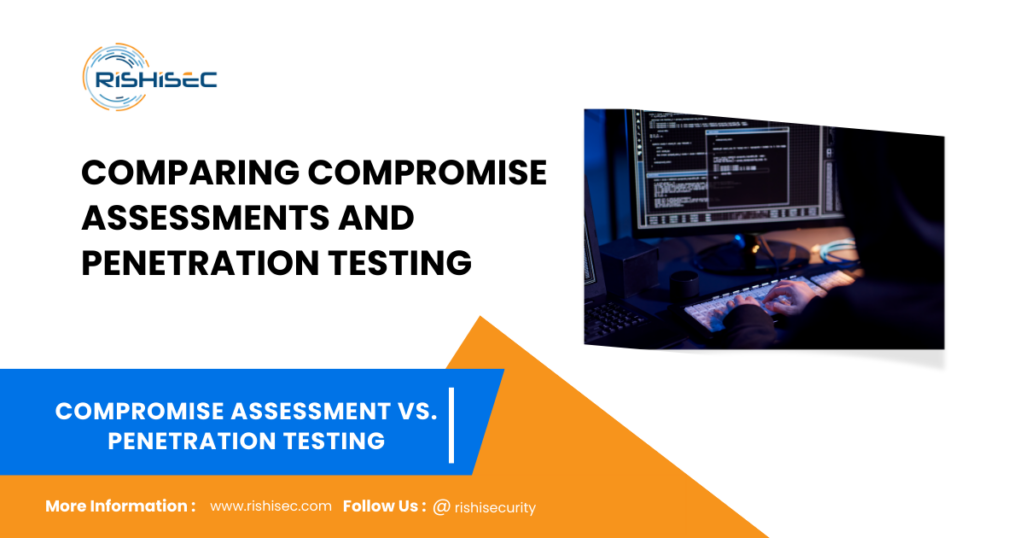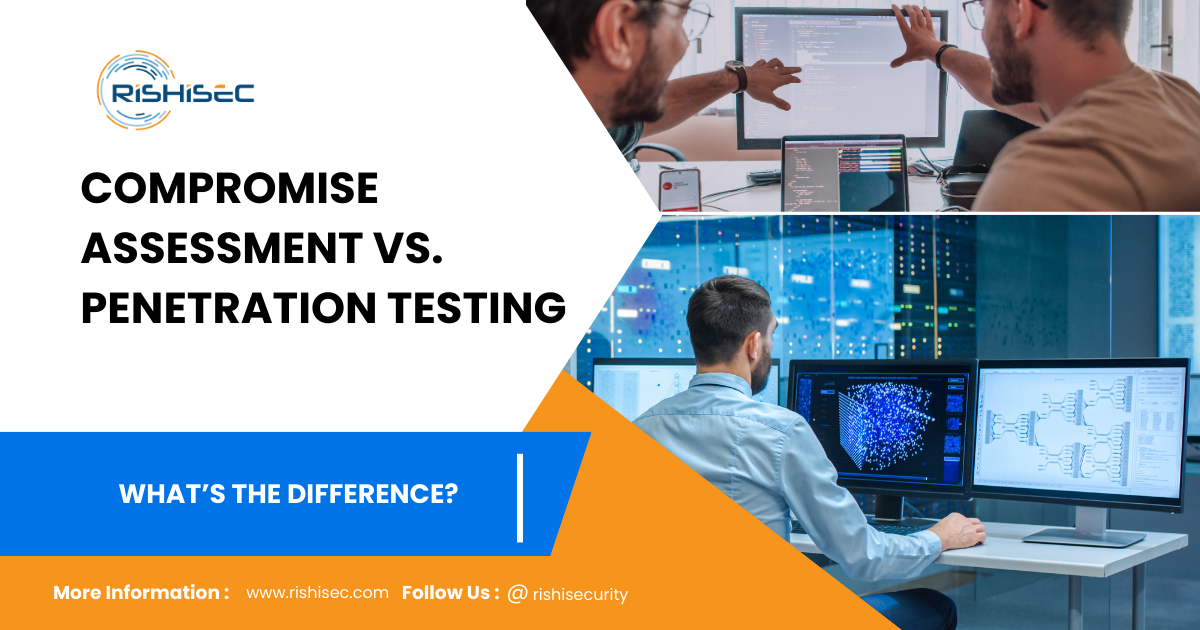Contents
Compromise Assessment vs. Penetration Testing
In the ever-evolving landscape of cybersecurity, understanding the distinctions between compromise assessments and penetration testing is crucial. Both methodologies aim to protect your organization from cyber threats but approach this goal from different angles. This comprehensive guide will delve into the nuances of compromise assessment vs. penetration testing, helping you determine which is best suited for your cybersecurity strategy.
What is a Compromise Assessment?

A compromise assessment is a proactive security measure designed to identify and assess potential threats within an organization’s network. Unlike penetration testing, which simulates an attack to find vulnerabilities, a compromise assessment focuses on detecting indicators of past or ongoing breaches.
Key Aspects:
- Objective: Identify existing compromises, unauthorized activities, and hidden threats within the network.
- Methodology: Analyzes network traffic, logs, and system behavior to uncover malicious activity.
- Outcome: Provides a detailed report of potential threats and a roadmap for remediation.
What is Penetration Testing?

Penetration testing (pen testing) is an authorized simulation of cyber-attacks aimed at evaluating the security of an organization’s systems. The goal is to identify and exploit vulnerabilities to determine how an attacker might gain unauthorized access.
Key Aspects:
- Objective: Discover vulnerabilities and security weaknesses before they can be exploited by real attackers.
- Methodology: Uses various techniques to simulate attacks, including social engineering, network exploitation, and application testing.
- Outcome: Delivers a comprehensive assessment of security flaws and actionable recommendations for improvement.
Comparing Compromise Assessments and Penetration Testing

Both approaches play essential roles in a comprehensive security strategy, but they offer different benefits.
1. Focus:
- Compromise Assessment: Focuses on detecting breaches that may have already occurred. It’s more about finding signs of compromise that might have gone unnoticed.
- Penetration Testing: Concentrates on identifying vulnerabilities before they can be exploited. It simulates real-world attacks to test the resilience of your defenses.
2. Timing:
- Compromise Assessment: Often conducted as a response to suspected breaches or as part of regular security audits.
- Penetration Testing: Typically scheduled at regular intervals or when major changes are made to the IT environment.
3. Methodology:
- Compromise Assessment: Involves forensic analysis and threat hunting to uncover hidden threats.
- Penetration Testing: Utilizes controlled attacks to exploit weaknesses and assess the effectiveness of current defenses.
When to Use Each Approach
Compromise Assessment:
- Use Case: When there is suspicion of a breach, after a major security incident, or during a routine security review.
- Benefits: Provides insights into potential damage and ongoing threats, helping to address and mitigate active compromises.
Penetration Testing:
- Use Case: To proactively identify and fix vulnerabilities, especially before a major product launch or system update.
- Benefits: Strengthens overall security posture by addressing potential vulnerabilities before they can be exploited.
Best Practices for Integrating Both Methods
To maximize your cybersecurity efforts, consider integrating both compromise assessments and penetration testing into your strategy:
- Regular Assessments: Schedule periodic compromise assessments and penetration tests to continuously improve your security posture.
- Combine Findings: Use insights from both methods to develop a comprehensive security plan that addresses both current and potential threats.
- Stay Updated: Keep up with evolving threats and adjust your assessments and testing strategies accordingly.
Conclusion
Understanding the differences between compromise assessments and penetration testing is vital for developing a robust cybersecurity strategy. While each has its distinct advantages, combining both methods will provide a more comprehensive approach to protecting your organization from cyber threats.
CTA
Ready to elevate your cybersecurity strategy? Start with a free trial of SentryCA, designed to enhance your organization’s security posture through advanced threat detection and proactive assessment tools. Get Started Today.
Know The Importance of Compromise Assessments in Regulatory Compliance by reading this iconic post.


